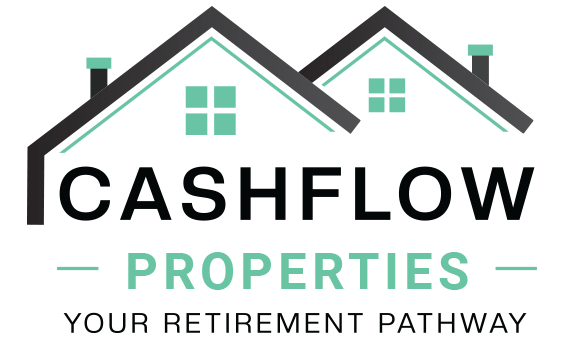
Building wealth through property isn’t about luck, it is about strategy, timing, and the discipline to keep buying when others hesitate. Right now, Australia’s property market is offering a rare mix of conditions that savvy investors dream of: interest rates easing, borrowing power rising, and rental vacancies at record lows. This trifecta means cash flow is strengthening, yields are holding, and opportunities are opening up for those ready to act decisively. If your goal is to turn one property into many, 2025 might just be the year to fast-track your portfolio growth.
Let’s break down the practical, data-backed framework that turns market opportunities into portfolio momentum-
Prepare a Strong Mindset
Successful investors treat property as a business rather than a lifestyle choice. This begins with having a written plan that outlines clear targets such as the number of properties to acquire, minimum yield thresholds, and financial buffers. By establishing rules in advance, you remove the risk of emotional decision-making.
As of July 2025, national vacancy rates have tightened to 1.2 percent, highlighting just how under-supplied the rental market remains. Investors who commit to a disciplined strategy in this type of market environment can capture consistent rental growth that strengthens their long-term position.
Know Your Maximum Borrowing Power
Understanding your borrowing capacity is critical before pursuing new opportunities. This capacity shifts with interest rates and lender policy, which means staying updated with your mortgage broker is essential. Recent Reserve Bank cuts have reduced the cash rate to 3.60percent in August 2025, and economists anticipate the possibility of further reductions. This is already lifting serviceability and creating additional scope for investors to re-enter the market.
Ask your broker for multiple borrowing scenarios, including calculations with and without interest-only terms, as well as stress tests for potential future rate increases. This preparation allows you to move quickly when the right property appears.
Focus on Below-Market Purchases Supported by Rent
Portfolio growth requires cash flow that sustains itself. The most effective approach is to target below-market opportunities where rental income comfortably covers debt obligations. Properties offered by motivated vendors, listings that have been on the market for extended periods, and smaller private complexes often provide the best entry points.
Gross rental yields nationally are averaging around 3.7 percent, although this figure varies significantly across regions and asset classes. By focusing on affordable properties such as villas, townhouses, or units in tightly held suburbs, investors can often secure yields of 5 percent or higher. The key is to ensure that the rental income passes lender serviceability tests while leaving room for positive cash flow.
Buy Without Emotional Attachment
Houses may appeal to the heart, but portfolios are built by numbers. Investors who avoid emotional attachment to a dwelling type are able to scale much faster. A modest villa or townhouse in a small complex can deliver far stronger returns than an overpriced house in a premium location. The property does not need to be aspirational; it needs to be functional, well-priced, and income-generating.
Target High-Yield Properties at the Bottom of the Cycle
Timing the exact bottom of a cycle is impossible, but entering when conditions are subdued is essential. Many suburbs saw price corrections during 2023 and 2024, yet rental yields remained firm. With market activity strengthening again in 2025 and auction clearance rates rising, there is renewed urgency for investors to secure opportunities before values rebound further. Identifying areas where yields remain above average, vacancies are tight, and prices have not yet recovered to peak levels provides an excellent pathway for faster portfolio accumulation.
Leverage and Use It Consistently
Leverage is the engine that drives rapid expansion. According to ABS data, investor lending has been trending higher through 2025 as buyers return to the market. Each time you acquire a property, focus on how quickly you can recycle the equity generated from below-market purchases, value-add improvements, and rising rents.
Best practices include ordering valuations within six months of purchase if you have improved the property, maintaining flexible redraw and offset facilities, and ensuring that loans are structured separately to avoid cross-collateralization.
Keep Loans on Interest-Only Terms

During the growth phase, interest-only loans maximize cash flow and provide additional buffers. This allows surplus rental income to be directed toward building deposits for the next acquisition. With national vacancy rates at just 1.2 percent, rental demand is strong enough to comfortably support this strategy for many investors.
Avoid Obsessing Over Interest Rates
Interest rates impact cash flow, but they should not dictate your strategy. Portfolio growth comes from acquiring the right assets repeatedly, not from waiting for the lowest possible rate environment. In 2025, the cash rate has already eased to 3.60 percent and could fall further depending on economic conditions. Investors who continue to acquire cash-flowing properties can always refinance later to take advantage of lower rates and improved terms once their portfolio is established.
A Real-World Example: Bharat’s Bottom-Cycle Compounding
Bharat’s approach demonstrates the power of discipline. Instead of pursuing million-dollar homes, he consistently targeted affordable properties at the bottom of the cycle. By focusing on villas, townhouses, and units with solid yields and growth prospects, and by recycling equity without hesitation, he was able to build a portfolio of more than 40 properties. His success is not the result of chance but of applying a repeatable system that any committed investor can adopt.
Ten-Step Action Plan for Fast Portfolio Building by Bharat Patel
1. Map out borrowing scenarios with your broker, including stress-tested options.
2. Define your buy box, focusing on sub-markets with yields above the national 3.7 percent average and vacancies below 1.5 percent.
3. Source deals from small complexes, cosmetic renovation opportunities, and stale listings.
4. Analyse every property using comparable sales and rental appraisals.
5. Acquire using interest-only loans with adequate cash buffers.
6. Execute low-cost improvements to lift rental income immediately.
7. Reassess valuations within six months where improvements have been made.
8. Recycle equity into the next deposit and costs.
9. Repeat consistently rather than waiting for perfect timing.
10. Refinance strategically to improve terms and restructure as the portfolio grows.
Final Thoughts
Building a property portfolio quickly in Australia is a matter of applying the right framework with consistency. The current market, shaped by easing rates, tight vacancies, and improving rental yields, is well suited to disciplined investors. By purchasing below-market, prioritizing serviceable rental income, avoiding emotional decisions, leveraging equity effectively, and refinancing at the right time, you can accelerate your journey from a single property to a substantial portfolio.

